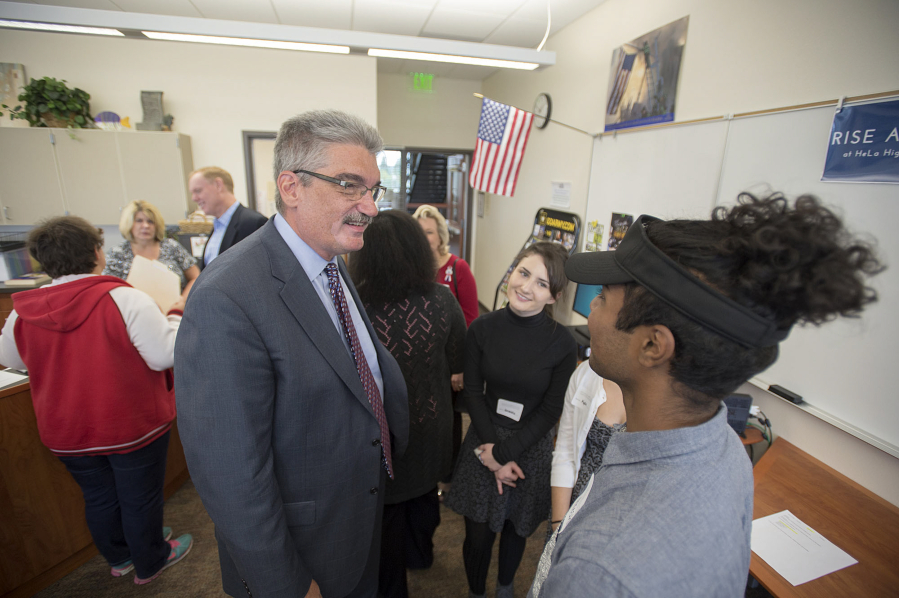Standing in front of Henrietta Lacks Health and Bioscience High School on Monday morning, Dr. Gary Gilliland couldn’t help but notice how Lacks’ story had come full circle.
In 1951, Lacks died from cervical cancer — a cancer that can now be prevented by a human papillomavirus vaccine. Lacks’ own cancerous cells were harvested, without her knowledge, to create an immortal cell line and used to develop, among other things, the polio vaccine.
“It’s a tremendous contribution,” Gilliland said of the HeLa cells. “That’s why it’s such a wonderful thing to have this school named after her.”
And now, these high school students are working toward careers that could lead to future medical advancements, said Gilliland, the president and director of the Fred Hutchinson Cancer Research Center in Seattle.
“Her legacy is not a cell line she left us,” Gilliland told about 30 students attending a meet and greet with the renowned physician-scientist. “Her legacy is the people like you who train here.”
“Looking ahead, I can’t imagine what you might go on to do,” he added.
Gilliland was in Vancouver on Monday to speak at the Columbia River Economic Development Council’s fall luncheon, where he stressed the importance of researchers working collaboratively to find medical solutions. Earlier, he and a couple dozen CREDC members visited the health care-focused school to meet with students and tour the campus.
Gilliland is a researcher and clinician specializing in blood cancers, such as leukemia. He spoke briefly to the students about the advancements in cancer treatments, specifically about how the research center’s work in bone marrow transplantation led to the development of immunotherapy, which uses a person’s immune system to attack cancer cells.
“We’re seeing cures in people who had death sentences,” Gilliland told the students.
Senior Madelyn Terhune had a few minutes to chat with Gilliland, telling him about her college plans and career goals. He gave her tips on schools and discussed some of the skills she’ll need to become a pediatric cardiothoracic surgeon.
“It’s such an amazing opportunity to speak to someone with such experience,” Terhune said of Gilliland.
“The fact that they want to see our school is really cool,” she added.
Gilliland was just as impressed by the students and the school.
“I’ve never seen anything like this,” he said after touring HeLa High. “The quality of the technology, the quality of the staff, of the students, is just remarkable.”
For the students, Gilliland’s visit was a reminder of the uniqueness of their school.
“Everyday life around here is pretty normal,” junior Zie Wimer said. “And then we have something like this happen, and you realize we’re doing something really different here.”





